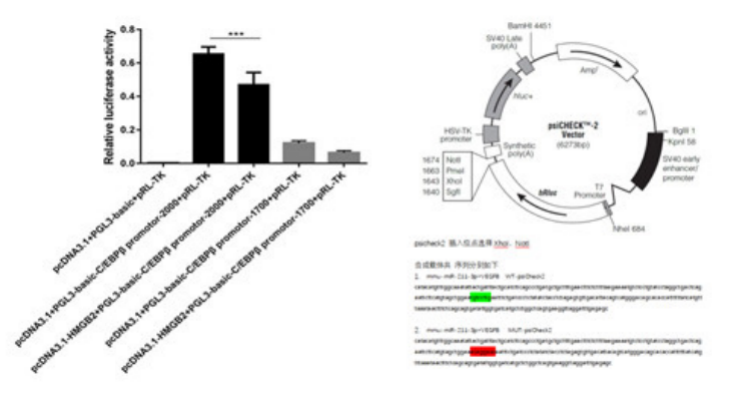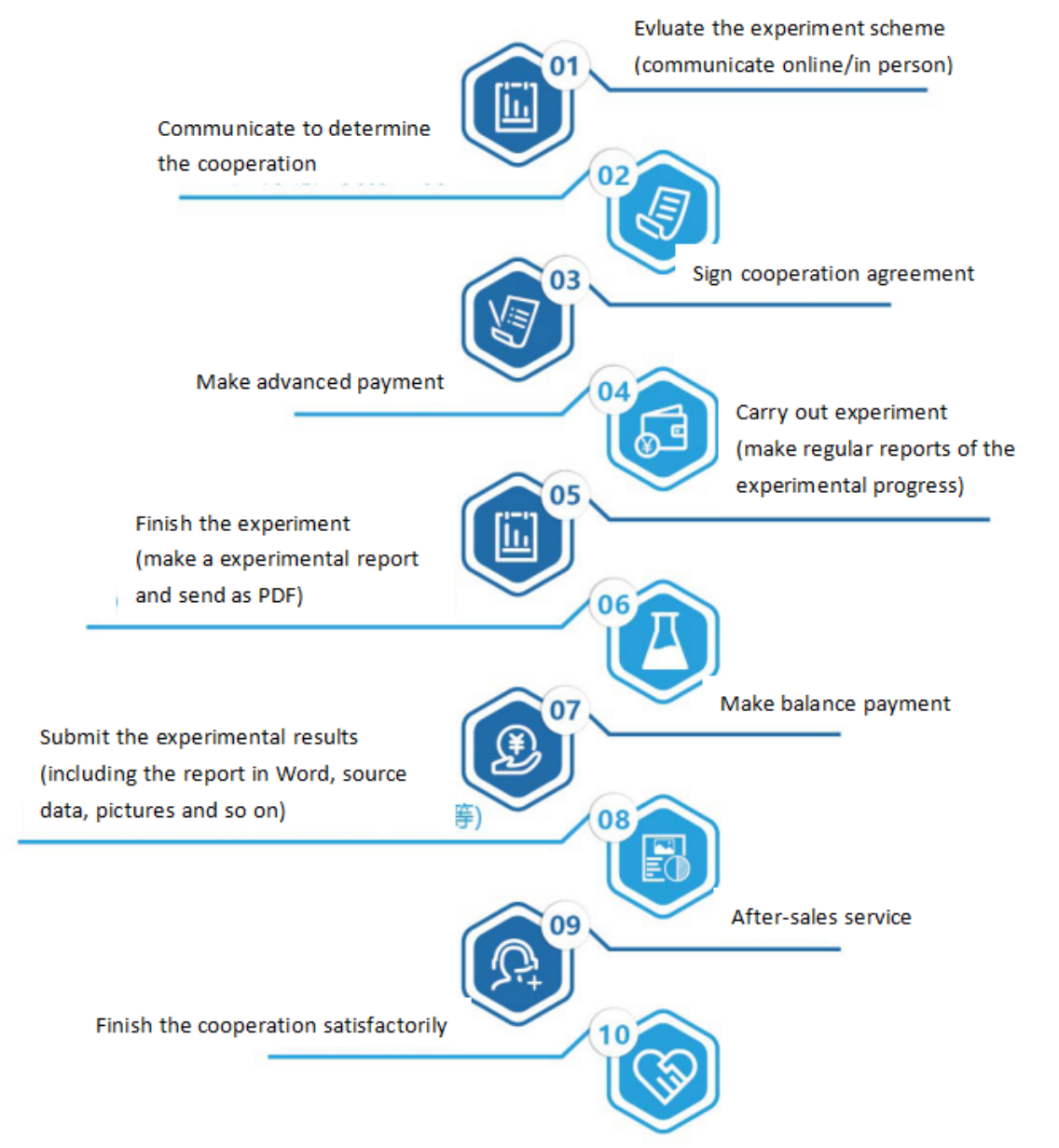One. Experiment Principle
Using the characteristics that luciferase combines with substrate will generate chemiluminescence reaction, the regulatory elements of gene transcription of interest are cloned upstream of firefly luciferase gene to construct luciferase reporter plasmid. Then transfect cells, lyse the cells after appropriate stimulating or treating, and then determine the luciferase activity. The effects of different stimuli on the regulatory elements of interest will be judged by the level of luciferase activity.
Two. Application Introduction
Double luciferase experiments are usually used in the following research directions: verifying the targeted interaction between miR and mRNA, verifying the targeted interaction between miR and lncRNA, promoter structure analysis, verifying the function of specific transcription factors with their regulatory sequences, etc.
Main application fields
1. Potential promoter / promoter core region detection;
2. Detection of regulatory core elements such as potential enhancer / suppressor;
3. Detection of possible transcription factor binding sites in promoter region;
4. Interaction between promoter / enhancer and transcription factor;
5. Virus / cell interaction;
6. Regulation (inhibition or enhancement) of promoter activity by chemical inducing factors such as drugs;
7. Regulation (inhibition or enhancement) of promoter activity by physical inducing factors such as radiation.
Three. Experiment Methods

Four. Samples Delivery Requirements
Sample type | Sample requirements | Preservation conditions | Delivery conditions | Note |
Animal tissue | A single sample should be less than 0.1g, and installed in 2ml EP tube or frozen storage tube, and do not overdose it; Samples should be as fresh as possible. If protein or nucleic acid cannot be extracted immediately, they should be frozen at - 80 ℃ or lower after quick freezing with liquid nitrogen. Frozen samples should avoid repeated freezing and thawing to avoid degradation. | At - 80 ℃ | With dry ice | All samples need to be uniquely marked and the markings are clearly identifiable |
Seed sample | A single sample of seed that are shelled and fresh or stored in liquid nitrogen should be less than 0.2g | At - 80 ℃ | With dry ice | |
Adherent/Suspension cell | 1. Total RNA or protein: 10^5 cell/index, plasma/ nuclear RNA or protein:10^7 cell/index, mitochondrial RNA or protein: 2*10^7 cell/index.the samples should be as fresh as possible and should directly add Trizol (QPCR test) or frozen at - 80 ℃ after collected. 2. If the cells are in poor condition after treatment (dosing, transfection and infection), the sample collection volume should be increased as appropriate | At - 80 ℃ | With dry ice | |
Whole blood/serum samples | 5 to 10 ml of peripheral blood and 1 to 3 ml of bone marrow preserved with anticoagulant tubes. The leukocyte homogenate stored at -80 ℃ for no more than half a week is less than 400 μ L, and 400 μ L Trizol is added every 400 μ L | At - 80 ℃ | With dry ice | |
Paraffin embedded samples | The effective thickness of paraffin block embedded by standard paraffin embedding box should be thicker than 0.1cm; The thickness of each fresh FFPE tissue sections should be no more than 10 microns, and a surface area of no more than 250 mm^2, 2 to 8 piece in total. | At - 20℃ | With ice bag | |
Antibody | 1. Provide antibodies that meet the corresponding experimental requirements according to the sample species; 2. Send according to the requirements of the antibody manual, and try to avoid sub packaging; In case of sub packaging, ensure that the amount is sufficient for the experiment, and provide the antibody instruction; 3. The antibody tube storing the antibody should have a mark that can recognize the antibody, and the amount of antibody should be greater than the amount required for the experiment. | At - 20℃ | With ice bag | |
Primers | The primers should be dry powder and less than or equal to 1 OD. If pre experiment is conducted, at least two pairs of primers should be provided for each gene, and the primer synthesis sheet should be attached by the company, | At - 20℃ | With ice bag or at ambient temperature |
Five. Case Display

Six. Common Problems
1. Because the temperature has an effect on the enzyme reaction, the sample and reagent need to reach ambient temperature before determination.
2. Renilla luciferase detection working solution should be used immediately after preparation. It cannot be prepared into working solution and stored for a long time.
3. Luciferase Assay Reagent II (LAR II) cannot be frozen and thawed repeatedly. Make sure to use the same batch of LAR II every time. The prepared LAR II can keep its stability for one month at - 20 degrees and one year at - 70 degrees.
4. Keep the reagent away from light during storage and use.
5. In order to obtain the best determination effect, the time from the mixing of sample and determination reagent to the determination should be controlled within the same time (1-2 seconds) as far as possible.
6. Do not touch the operation screen during use (the program will be terminated or cancelled).
7. At ordinary times, try not to move the instrument to prevent the touch screen from moving.
Seven. Service Process






